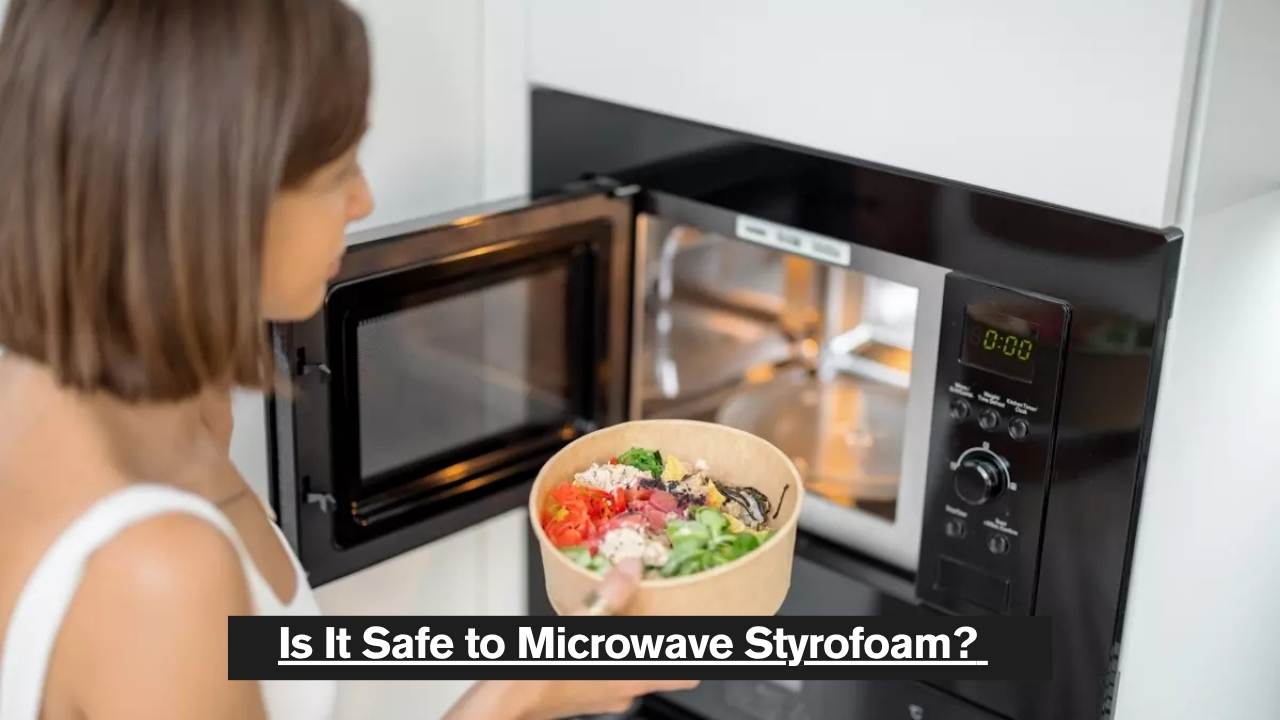Is It Safe to Microwave Styrofoam? Myth or Hazard?
If you’re like most people, you’ve probably used Styrofoam containers to store leftovers or picked up some takeout in one. It’s lightweight, inexpensive, and keeps food warm. But there’s always that little voice in your head asking—is this stuff safe for the microwave?
Can you actually microwave Styrofoam, or is it one of those myths we’ve all heard a million times? Let’s break it down together.
Can You Microwave Styrofoam? Yes, but it depends! If the Styrofoam is labeled as microwave-safe, you’re good to go. However, regular Styrofoam can melt or release harmful chemicals when heated.
In this blog, we’ll discuss whether it’s truly safe to microwave Styrofoam, spot a microwave-safe container, and discuss other options for reheating food without the risk of disaster.
What is Styrofoam?
Styrofoam is a kind of plastic foam produced from polystyrene. It is light and tough and a very good insulator, so it is suitable for packaging, disposable cups, and food containers. Though it is often used for these purposes, its properties make it a doubtful material for the microwave.
Is It Possible to Microwave Styrofoam?
Yes! Regular Styrofoam (or expanded polystyrene) can melt or leak poisonous vapors if heated for too long, ruining your meal and appliance. However, some Styrofoam boxes are made to withstand the microwave’s temperature and will be engraved with “microwave-safe” on the bottom.
What Happens When You Microwave Styrofoam?
Not all Styrofoam is the same, and microwaving the wrong kind can lead to many issues. Here’s a brief overview of potential issues that may arise:
Melting: If you pop a regular Styrofoam container in the microwave, it could start to melt. This means a mess and potentially harmful chemicals leaching into your food. It’s definitely not ideal.
Chemical Release: Some Styrofoam contains styrene, a chemical that can leach into food when heated. Microwaving it might increase the risk of this happening, which is not great if you try to stay healthy.
Fire Hazard: Believe it or not, Styrofoam can catch fire in the microwave—though rare, it’s still possible. It’s always best to double-check the container before microwaving.
Alternatives to Styrofoam in the Microwave
If you’re not sold on microwaving Styrofoam, don’t worry. There are numerous options available that are safe for use in the microwave. Here are some safe alternatives to help you avoid the risk of melted foam and chemicals:
Glass Containers
Glass is among the most dependable and secure materials for use in microwaves. It’s non-toxic, durable, and retains heat well. Ensure it’s labeled microwave-safe and avoid sudden temperature changes to prevent cracking.
Ceramic Dishes
Microwave-safe ceramic bowls and plates are another great alternative. They’re sturdy, don’t absorb odors or stains, and heat food evenly. However, avoid ceramics with metallic paint or trim.
Microwave-Safe Plastics
Certain types of plastics are specifically designed for use in microwaves and are marked as such. Check for containers that feature a label or symbol indicating they are “microwave-safe.” Be cautious with older or generic plastic containers, as they may be unsafe under high heat.
Silicone Containers
Food-grade silicone is flexible, heat-resistant, and safe for microwave use. It’s a popular option for reheating, storing, or even cooking meals in the microwave.
Microwave-Safe Paper Products
Paper plates, bowls, and towels (without plastic coatings or prints) can be safely used in the microwave for short durations. However, they’re best suited for quick reheating rather than cooking.
8 Key Safety Tips for Using Microwave-Safe Containers
Safety should always be a top priority when using containers in the microwave. To ensure your food heats up safely without risk of melting, chemical contamination, or even injury, follow these essential tips:
- Check for a Microwave-Safe Label: Ensure containers are labeled microwave-safe to avoid melting or harmful chemical release.
- Avoid Sealed Containers: Never use tight-fitting lids to prevent pressure build-up and potential explosions.
- Use Safe Materials: Opt for microwave-safe glass, ceramic, or BPA-free plastics.
- No Metal or Aluminum: Never microwave metal or aluminum foil, as they can cause sparks or fires.
- Inspect for Damage: Check containers for cracks or chips, which can cause breakage or injury.
- Follow Manufacturer Guidelines: Adhere to specific usage instructions for safe microwaving.
- Be Cautious with Fatty Foods: High-fat items may splatter and cause burns; cover them with a microwave-safe cover.
- Avoid Overheating: Steer clear of heating food excessively to safeguard against burns and harm to the container.
Freequently Ask Questions
Conclusion
In general, putting Styrofoam in the microwave is not recommended, especially if it’s not labeled as microwave safe. The risks of melting, chemical leaching, and fire make it a dangerous choice for heating food.
Choose containers made of glass, microwave-safe plastic, or ceramic to ensure safe handling of microwave heat. Always check for labels and take precautions to ensure that you are using containers that are safe for microwave use.

